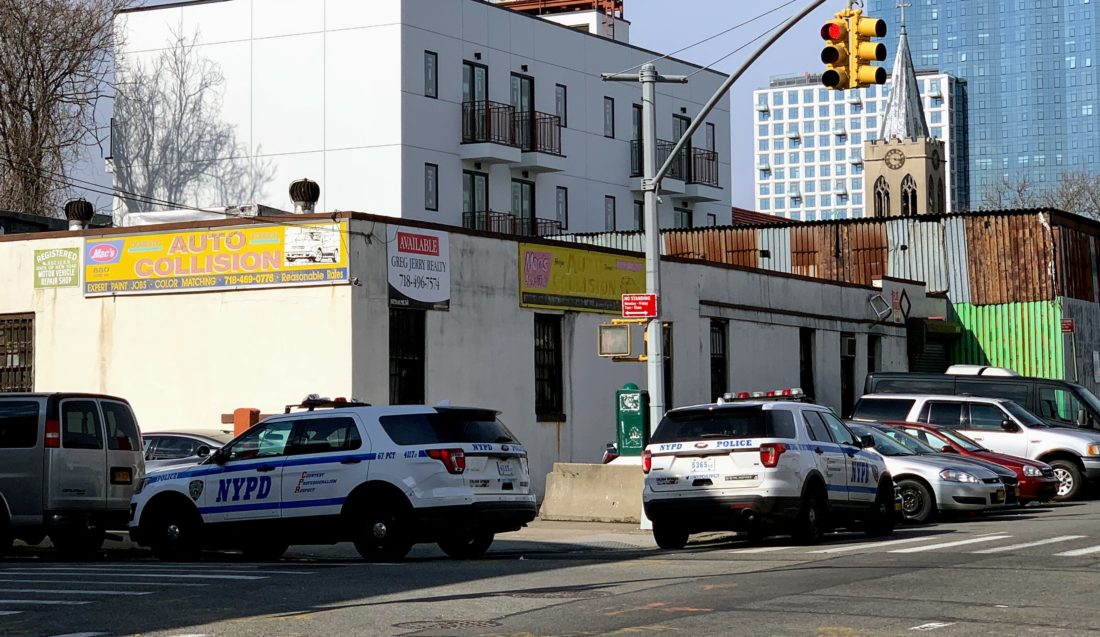Police Explanation for Stop-And-Frisk Increase Doesn’t Sit Well with Civil Liberties Groups


What’s behind the increase of NYPD stop-and-frisks in 2019? While law enforcement officials downplay the rise, alarm bells are going off among some civil liberties groups.
Cops used the controversial policing tactic 22% more last year compared to 2018, according to statistics NYPD reported on February 7. Three Brooklyn neighborhoods made the top 10 list in the city – East New York topped the list, which also includes East Flatbush and Bedford Stuyvesant.
This reported increase in stops comes against the backdrop of the police commissioner blaming arrestees released from jail under the new bail reform law for the uptick of crime in January.
The NYPD said the new data does not signal a return to the past. Police officials reported 13,459 stop-and-frisks last year, compared to 685,000 in 2011, according to an NYPD statement sent to Bklyner.
More Accurate Reporting?
Officials claim the reported 2019 rise is “unlikely to be a true increase in stops but rather more accurate and complete reporting,” the statement said, adding that the “department has enhanced its auditing and compliance metrics as well as developed training to address stops and proper reporting.”
Brooklyn Defender Services (BDS) isn’t buying that explanation. BDS, a public defender organization, told Bklyner that the NYPD likely underreports its routine stop and harassment of mainly Black and Hispanic men. The organization annually represents nearly 35,000 low-income clients.
“The NYPD has attempted to explain the apparent increase in stop-and-frisks as the result of better internal reporting,” Lisa Schreibersdorf, BDS’ executive director told us. “However, the NYPD, which controls enforcement, arrest numbers, and certain charging decisions, has historically used statistics generated by the department itself to promote its political agenda.”
She continued: “For example, the NYPD previously claimed credit for lower numbers of stop-and-frisk encounters, while now blaming an increase on corrected reporting methods. Most recently, the department has claimed credit for reducing murder and rape numbers in New York City while blaming bail reform for alleged increases in property crimes.”
For the New York Civil Liberties Union (NYCLU), it’s unclear exactly why the number of stops increased last year.
“But it highlights how the NYPD has not completely moved away from broken windows policing that gave rise to the astronomically high number of stops we were seeing 10 years ago,” NYCLU Legal Director Chris Dunn told Bklyner. “While the increase in the number of stops gives us cause for concern, the larger issue is the number of stops that are likely not being reported by officers.”
Stop & Frisk History
Charges of racial and ethnic bias are at the root of the controversy over stop-and-frisk. The policing tactic disproportionately targets people of color. Data from 2019 revealed that Black or Hispanic people accounted for 88% of stops but together represent about 53% of the city’s population.
As Bklyner reported in 2012, at the height of the stop-and-frisk era, the police seldom found weapons in the “hot spot” neighborhoods where they conducted most stops.
That pattern apparently repeated in 2019. The 75th Police Precinct, located in the mostly Black and Hispanic neighborhood of East New York, conducted the most reported stops (495), yet the precinct’s arrest rate was half the city’s average, according to the New York Post.
A federal court, in August 2013, found that the city’s stop-and-frisk was problematic because it amounted to racial profiling and violated the constitutional rights of minorities. It was a rebuke to then-Mayor Michael Bloomberg who championed the policing tactic. Bloomberg, now running for U.S. president, claims he had a change of heart about the impact of stop-and-risk in communities of color.
Bail Reform
Civil liberties groups are raising questions about the reported increase in stop-and-frisk as controversy brews over New York’s new bail reform law, which took effect on January 1. It prohibits judges from imposing cash bail on defendants accused of a misdemeanor offense and nonviolent felonies.
It’s unclear if law enforcement will ramp up stop-and-frisk in response to an uptick of crime in January. New York City Police Commissioner Dermot Shea, who opposes the new law, said it’s no coincidence that serious crimes rose after bail reform went into effect, the Wall Street Journal reported.
Shea’s comments alarm many civil liberties advocates.
“Just as the NYPD is currently waging a public disinformation campaign to smear bail reform, which grants equal pre-trial rights to the poor as to the wealthy, it is no surprise that they are once again ramping up aggressive engagement in stop-and-frisk,” Schreibersdorf said.